 Last week, I let you know my strong feelings about the need to ban vinyl from the craft world. This week, I want to explore what that means in real time and explore some potential alternatives.
Last week, I let you know my strong feelings about the need to ban vinyl from the craft world. This week, I want to explore what that means in real time and explore some potential alternatives.
First and foremost, I see clear vinyl used most extensively in hand made items. It is found in wallets, ID holders and things like ipod cases. Unfortunately, I have yet to find an alternative for clear vinyl. So it stays on the Eco-Crafter’s List of Demands.
Second, many crafters use vinyl to make bags; many, many bags. The vinyl fabric that is used in these bags is bright and colorful. It comes in many different colors and is a relatively inexpensive material. It is also used because people either can’t afford leather, or are morally opposed to using leather.
For these purposes, 100% polyurethane fabrics can do the trick. It is touted as faux-leather, and I know at least one crafter that made the switch and is very happy with it, saying that it is soft and buttery like leather. You can find 100% polyurethane fabric from FabricDirect. It is definitely not as cheap as vinyl, but it doesn’t come with phalates and dioxin.
Many of you asked about polyurethane during Round 1, wondering if it is similar to vinyl and if it is choosing the lesser of two evils. Well – yes and no.
Vinyl is a horrible, horrible substance. Numerous issues surround the manufacturing, use and disposal of the plastic. For those of you that have read Cradle to Cradle by William McDonough and Michael Braungart, know that vinyl is on the “X List,” substances that are so bad in every way shape and form that they need to be phased out of use, immediately. As for polyurethane, that is a bit gray.
During my research on the topic, the only caution on polyurethane that I came across was its proclivity to fire and how it then might be treated with flame retardants, which is source for carcinogens. It is also a plastic and yes, all plastic is derived from oil, and we all know the arguments on our need to kick our nasty oil habit. But my main point is that it is not vinyl and you need to decide for yourself if you are OK with polyurethane.
Another reason crafters use vinyl is for its water resistance. In researching ways to make fabric water resistant, I learned that vinyl is often referred to as oilcloth. The name came from a type of canvas that was treated on one side with oil paint or linseed oil and the name can be traced back to the early 1900’s. It was used in all the ways that vinyl is used today – table cloths, place mats, bags, aprons, floor coverings, etc.
Today it is very hard to find genuine oilcloth. Most of the oilcloth found at fabric stores is made from PVC. This is what crafters use when they repurpose table cloths into other items such as bags and aprons. If you go searching for oilcloth, don’t be fooled by the name. Look for what it is made from. More than likely it is vinyl.
You can make your own oilcloth and I have attempted to make a bit with mixed results. I found two different write ups about oilcloth with directions on how to make your own – What is real oilcloth and what isn’t and Old fashioned oilcloth.
To make your own oilcloth you will need canvas or sturdy cotton. I cut a couple of lengths from a drop cloth that I’ve had for some years and use to make canvas tote bags. One of the write ups calls for the fabric to be stretched and the other does not. So I stretched one piece of canvas on an old stretcher and then cut up two similar sized pieces to try the “un-stretched” way.
You then take linseed oil and coat one side of the fabric with the oil. Linseed oil can be found at most art supply stores and is not petroleum based. I made sure that the surface was completely covered on all the samples and let them sit. The stretched canvas easily dried overnight and was ready for another coat. The un-stretched pieces have yet to dry, even though I hung them up for better air circulation.
At this point I am unsure how many coats of linseed oil will render the one side water resistant but I’m thinking at least 3 to 5 coats would be sufficient. I didn’t paint a design on the fabric, but you can decorate it. I would suggest using acrylic paints and doing so before treating the fabric with linseed oil, so the coating would protect it.
Making your own oilcloth is a very long process, but it isn’t very intensive. If you are willing to spend some time on it, oilcloth is a much better choice than vinyl. If you do make your own oilcloth, I highly recommend getting a thrifted canvas to stretch the fabric onto. It helps the fabric dry faster as there is better air circulation. яндекс
As you can see all of the options above are limited and in the case of wanting to use something clear, there isn’t an alternative. As Skye noted our Consumer Choices alone won’t Craft a Green World and what is needed is political action, not only on the part of our governments but also from each and every one of us.
If Target, Sears and Apple along with Sweden and Germany can have some form of PVC ban then so can we, as individuals, our craft stores and our municipalities. Sign the PVC pledge from the Center for Health, Environment and Justice, demanding safer PVC-free products. In the ‘How do you feel about toxic chemicals in the “new shower curtain smell”?’ box, demand PVC-free fabric.
Have other PVC-free alternatives? Make your own oilcloth? Tell the Michael’s store manager that you wanted PVC-free materials? Tell us in the comments!
Continue reading: Crafting Vs. Vinyl (Round 3)
[Image credit: FabricDirect and Kelly Rand respectively]

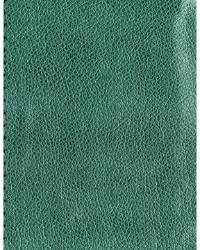

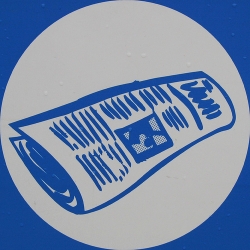
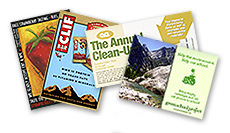

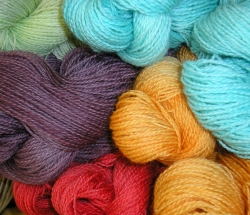
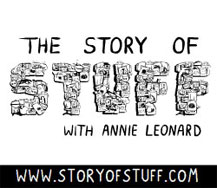

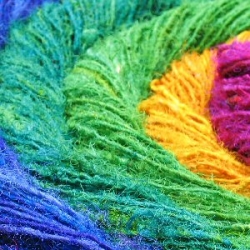

Very Nice..
Very Nice..
Very Nice..
Very Nice..
Oh, heck yah, I’ll be trying this. It is actually perfect for the project I’ve got in mind. I had no idea you could actually make it.
Thanks so much.
Oh, heck yah, I’ll be trying this. It is actually perfect for the project I’ve got in mind. I had no idea you could actually make it.
Thanks so much.
Oh, heck yah, I’ll be trying this. It is actually perfect for the project I’ve got in mind. I had no idea you could actually make it.
Thanks so much.
Oh, heck yah, I’ll be trying this. It is actually perfect for the project I’ve got in mind. I had no idea you could actually make it.
Thanks so much.
Thanks for the tute on oil cloth!
One other alternative for water resistant material is felted wool.
I buy almost all of my craft materials second hand and so I have bought 100% wool jumpers/cardigans and then felted them in the washing machine.
For something clear, I’ve often wondered if contact paper is some sort of PVC or if its something else?
Thanks for the tute on oil cloth!
One other alternative for water resistant material is felted wool.
I buy almost all of my craft materials second hand and so I have bought 100% wool jumpers/cardigans and then felted them in the washing machine.
For something clear, I’ve often wondered if contact paper is some sort of PVC or if its something else?
Thanks for the tute on oil cloth!
One other alternative for water resistant material is felted wool.
I buy almost all of my craft materials second hand and so I have bought 100% wool jumpers/cardigans and then felted them in the washing machine.
For something clear, I’ve often wondered if contact paper is some sort of PVC or if its something else?
Hi Kelly, thanks for clarifying this stuff on the different materials. I had wondered about oil cloth before but hadn’t looked into the historical source.
Hi Kelly, thanks for clarifying this stuff on the different materials. I had wondered about oil cloth before but hadn’t looked into the historical source.
Hi Kelly, thanks for clarifying this stuff on the different materials. I had wondered about oil cloth before but hadn’t looked into the historical source.
Hi Kelly, thanks for clarifying this stuff on the different materials. I had wondered about oil cloth before but hadn’t looked into the historical source.
What about PEVA? I bought a 100% PEVA clear shower curtain (from IKEA) to cut up and use in projects, where it would encounter babies & food. Does that sound safe to you?
What about PEVA? I bought a 100% PEVA clear shower curtain (from IKEA) to cut up and use in projects, where it would encounter babies & food. Does that sound safe to you?
What about PEVA? I bought a 100% PEVA clear shower curtain (from IKEA) to cut up and use in projects, where it would encounter babies & food. Does that sound safe to you?
What about PEVA? I bought a 100% PEVA clear shower curtain (from IKEA) to cut up and use in projects, where it would encounter babies & food. Does that sound safe to you?
thanks for this info….I bookmarked your site
thanks for this info….I bookmarked your site
thanks for this info….I bookmarked your site
thanks for this info….I bookmarked your site
Sckoon.com diaper company have some organic and water resistant diaper covers in their assortment.
I wonder what they are made of?
Sckoon.com diaper company have some organic and water resistant diaper covers in their assortment.
I wonder what they are made of?
Sckoon.com diaper company have some organic and water resistant diaper covers in their assortment.
I wonder what they are made of?
EVA is supposedly a good vinyl alternative
If you make your own oilcloth read the label on your linseed oil very carefully. Many “artist” linseed oils have synthetic dryers added, and these generally contain very toxic heavy metals…. not something you want next to your ham sandwich. I believe it is possible to get pure linseed oil with no additives, but you really want to be sure before using the product where it will come in contact with food or children.
I like this experiment and love that old-fashioned smell of linseed oil.
HOWeVeR:
LINSEED OIL IS NOT SUPPOSED TO come into contact with FOOD!
So just be careful how you use your oilcloth!
what is a thrifted canvas that you would stretch the canvas on to?
I’m old enough to remember real oil cloth. My mother used to buy it by the yard at the dime store and drape it over the table for a cloth. It always smelled very strongly when it was new. The odor would diminish with time. I don’t know if I’d want my sandwich to taste like that smell.
When oil cloth dries out too much, it cracks and crumbles where the crack is. It gets stiffer and harder.
Every so often, about once a week or so, during the life of the oil cloth, she’d wipe it down with a rag soaked with salad oil to keep it fresher.
Linseed oil is highly flammable.
Might you have better results from using shellac somehow?
For several reasons Flax oil is the worst choice!
I am wondering why no one mentioned saturated oils like coconut or palm, or wax like carnuba wax?
The links in the article about oilcloth do not work, nor does the link to the fabric store.
I reAlize this is an old post but I was looking for info on like cricut type vinyl. Any insight would be greatly appreciated.